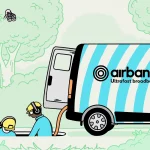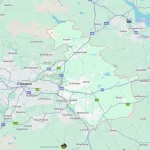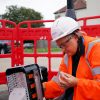Ofcom to Launch Improved UK Mobile Coverage Checker Later in 2025

The UK telecoms regulator, Ofcom, this week informed ISPreview that they’ve been “working hard to overhaul our mobile coverage checker” in order to better match people’s real-world experiences, particularly of modern 4G and 5G (mobile broadband) services, and intend to launch the result of all their work “later this year“.
Ofcom’s existing Mobile Coverage Checker is currently based on coverage predictions from the mobile network operators themselves (EE, Vodafone, Three UK and O2), which are generated using computer programs that simulate the way mobile signals travel from mobile masts and are blocked by any obstructions such as hills, trees, and buildings.
However, as many of ISPreview’s readers could probably attest, this sort of data doesn’t always reflect real-world experiences and should thus be taken with a pinch of salt. Last year the regulator indicated that they were working to improve all of this and that work is now starting to near completion.
Advertisement
A spokesperson for Ofcom told ISPreview:
“Our current coverage data comes from mobile network operators’ predictions, which we recognise may not always match people’s real-world experience at a very local level. We are working hard to overhaul our mobile coverage checker, which we expect to relaunch later this year with new and improved data to better reflect what people can expect.”
The improved checker will use higher signal strength thresholds when presenting local predictions, while also providing clearer explanations of the issues and the specific functions of the web-checker. Ofcom also intends to assess predicted signal strength information at a more granular level (50 or 25 square metres, instead of the current 100 square metres) to determine if it is possible to reduce the local uncertainty to some extent.
The regulator is also examining the use of measured data, including crowdsource data, to build on these coverage predictions. Finally, once the new checker has launched, Ofcom will move to consider undertaking a larger scale performance measurement programme to complement coverage predictions and enhance their mobile reporting.
Mark is a professional technology writer, IT consultant and computer engineer from Dorset (England), he also founded ISPreview in 1999 and enjoys analysing the latest telecoms and broadband developments. Find me on X (Twitter), Mastodon, Facebook, BlueSky, Threads.net and Linkedin.
« Mobile Operator Spusu Continues UK Price Freeze Until 2026























































FairPlay to startups like Streetwave carrying out drive testing which has forced this change. OFCOM’s maps are a total farce and represent all that is wrong with the telecoms industry where the industry provides its own performance data.
Ofcom are a farce full stop!
“However, as many of ISPreview’s readers could probably attest, this sort of data doesn’t always reflect real-world experiences and should thus be taken with a pinch of salt.” @Mark Jackson, a rather generous statement, the coverage map is more like a work of fiction, I’ve been on campsites that according to the maps, I’ve had no coverage at all, Mark Smith above makes a very good comment.
Good to finally see that Ofcom are acknowledging their coverage checker needs improvements. What I don’t understand is that they acknowledge their prediction models are wrong and their response is… keep using them but change the colouring pen for the boundaries!
OFCOM are the worst of the watchdogs. Totally incompetent on so many levels. It’s almost as if their customers are the companies they are supposed to be overseeing…
It’s about time we started to map real-world coverage, but also speed. It’s all well and good having 4-5 bars of signal, but if the capacity is throttled to 1mbps due to congestion or capacity, then it’s pretty much useless for 4/5g services.
Crowd sourced services such as ROAM (https://play.google.com/store/apps/details?id=xyz.roamnetwork.roamapp&referrer=utm_content%3DSaolaBadlandsFicus%26utm_source%3Drefer) and Streetwave should be expanded out, rapidly!
Will they be able to detect the issue I have where my signal appears to be really strong, but it keeps hopping towers so often that it appears to have a latency of 10 seconds?
About time. I used to use the root metrics app back in the day and as odd as it sounds, as I went to some remote places with few users of their app, I loved seeing the little hexagons update with my signal.